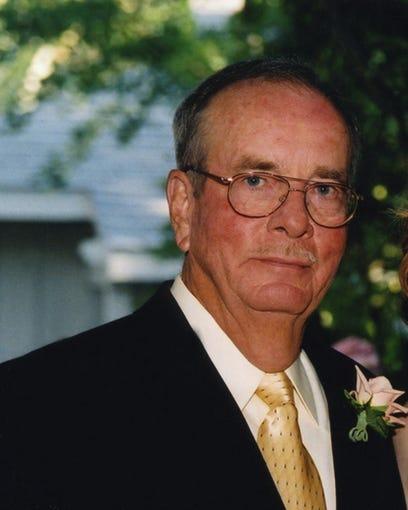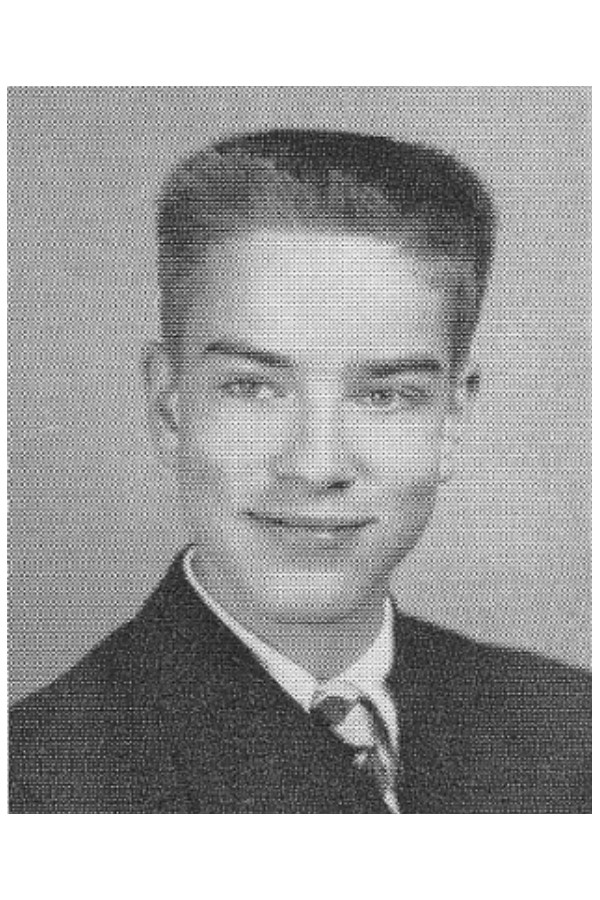
More Recent Photo

Yearbook Photo

More Recent Photo

Yearbook Photo
Fred Cordia (Jun 1951)
In 1962, President Kennedy said, “We choose to go to the moon because that goal will serve to organize and measure the best of our energies and skills, because that challenge is the one we are willing to accept, one we are unwilling to postpone and one which we intend to win.” When we did win that challenge in July of 1969, Fred Cordia (June ’51) was one of the people responsible for that victory.
After completing a degree in electrical engineering at Washington University, Fred served in the army as the section leader of an instructional unit on the Nike Ajax Anti-Aircraft Missile system at Fort Bliss, Texas. This training and experience made him a perfect candidate for the aerospace industry, and upon completion of his military obligation, he accepted a position with Convair Astronautics as a flight test engineer on the Atlas ICBM. He participated in the initial development and launch of this missile system, supervising the group of engineers who installed, modified, and activated Atlas sites in Wyoming, Nebraska, Iowa, Colorado, Washington, and Idaho.
During the Cuban missile crisis, Fred was called to the Strategic Air Commander’s office in Omaha, Nebraska, where his assessment of the strike capabilities of our ICBM missile system was paramount in President Kennedy’s speech to the country the following night telling America that our ICBMs were in full readiness, which resulted in the Russians backing down.
After the Atlas program, Cordia joined North America Aviation and moved to Kennedy Space Center for the moon landing program. He managed the second stage launch crew throughout the moon program, which included the launch of Skylab, the first U.S. space station. He was in the “firing room” for all the Apollo moon launches and was congratulated in person by President Nixon after the first successful moon landing.
When the moon landing project ended, Cordia transferred to the Space Shuttle program as the project engineer for the shuttle cockpit displays and controls. After thirty years with Rockwell International, Cordia retired. His “retirement” was with Boeing Corporation as a senior member of the International Space Station (ISS). While at Boeing, Fred developed a process to assure that over 150 components, manufactured by contractors from thirteen countries, would properly mate once in orbit. His name is on the patent application as the inventor of this crucial process.
Fred Cordia died on July 12, 2019, just eight days before the fiftieth anniversary of the moon landing. This was definitely a Roosevelt alumnus with “The Right Stuff.”
DOB: May 28, 1934 Richwoods, MO DOD: Jul 12, 2019 Thosand Oaks, CA Age 85